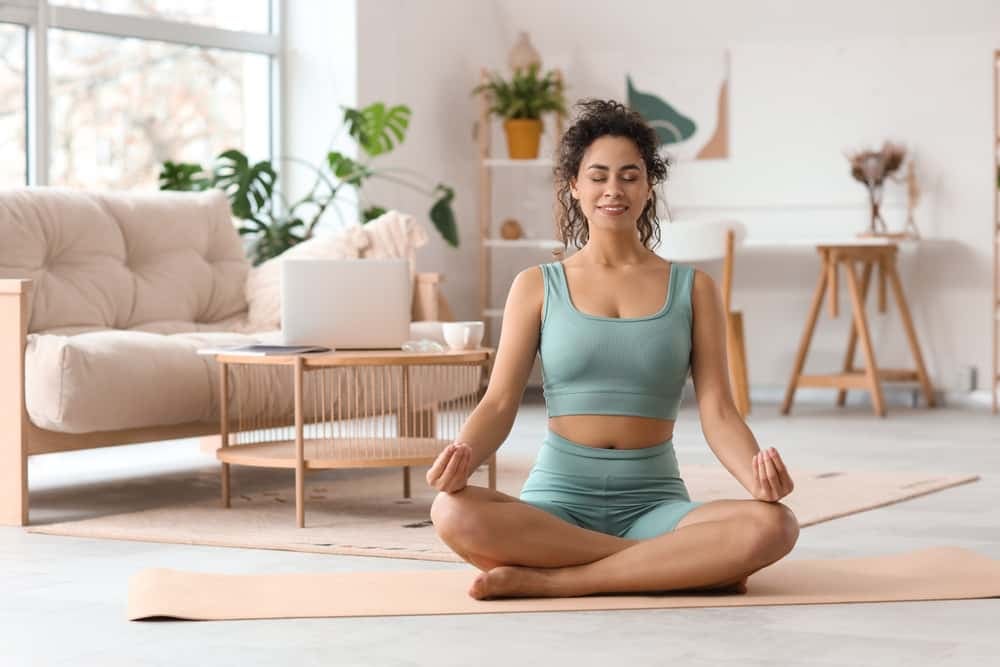 There’s a lot to be said for living in the present, free of frustration with the past or worry about the future. Embracing the present moment is a fundamental principle of mindfulness, and by extending this philosophy to our interior decor we can create a tranquil living space.
There’s a lot to be said for living in the present, free of frustration with the past or worry about the future. Embracing the present moment is a fundamental principle of mindfulness, and by extending this philosophy to our interior decor we can create a tranquil living space.
But all this is easier said than done! With all the chaos we have in our daily lives, being totally in the moment and at peace with ourselves is tough indeed. We’ve rounded up a few mindful home décor ideas that can help you get centred and stay calm, so that you can always be the best version of yourself!
Read on for some ideas that can help you tick all those wellness boxes.
The Psychology of Mindful Colours
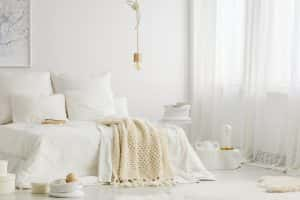
First up, let’s talk colours! The psychology of colours is one that’s well known in design circles. Colours can have a powerful influence over our emotions, moods, and overall well-being, and the colours you use in your home play a large part in the look and feel of each space.
Warm colours like red, orange and yellow add brilliance and vibrancy to your home, but are best used in moderation. Too much of these fiery colours can cause unrest and, in fact, even make you very uncomfortable after a while! Use little pops of these shades to dial up the energy, while maintaining a balanced aesthetic.

Cool shades like blue, green and grey are calming and restful, and conducive to a tranquil and calm atmosphere. White is the perfect neutral, as pure and serene as can be; while black is associated with power and formality, and when used in moderation can add depth to your spaces.
In the end, though, colours are a very personal choice. Hues that strongly resonate with you may be totally wrong for someone else. There are certain colours that make you feel happy, while there could be others that make you feel uneasy. So go with your gut, and pick the shades that speak to you!
Designing Furniture Comfortable to You

Designing furniture with comfort and mindfulness in mind calls for a thoughtful approach that considers both your physical and mental well-being.
Each piece of furniture in your home should have a specific function and purpose, and should be designed for comfort and ergonomic efficiency. Keep these factors in mind making your choices:
- Wooden furniture fosters a natural connection to the earth, and is a better choice than acrylic or polymer-based pieces.
- Seating should be designed to support the natural curvature of the spine, so that you are comfortable even when sitting for a long time.
- Adjustable features like reclining options, swivel bases or adjustable seat heights can give you a more comfortable seating experience.
- Upholstery made of natural, breathable fabrics like cotton, linen, or wool enhance comfort and contribute to your sense of well-being.
- Carve out specific areas without furniture where you can disconnect from technology and reconnect with your inner self.
- Choose sustainable and eco-friendly materials like bamboo, rattan and organic cotton, to align with mindful living principles. Not only does this benefit the environment, but also adds a great deal to your sense of personal well-being!
The Power of Natural Home Elements
Have you ever noticed how just being in the midst of nature can restore your spirits and make you feel refreshed? This is the power that nature has to ground us and rebalance our energies. By using natural elements in our home décor, we can connect to that same feeling of peace and harmony.

Here are some ways to use natural home elements to enhance the overall quality of your living spaces:
- Biophilic design restores our innate connection with nature and offers tangible interactions with the earth, water and fire elements. Fill your home with plants, and try to create a small water body inside your home or on the terrace. The gurgling sound of a water fountain with recirculating water creates a sense of calm, perhaps the reason why it is used so often in spas!
- Use natural materials like wood, stone, and bamboo to add warmth and authenticity to your home. Choosing sustainable materials supports eco-friendly practices and contributes to a healthier planet. Many natural materials are renewable and have a lower environmental impact.
- Choose flooring that is organic, like terracotta, ceramics, stone or wood, so that you are always connected to the natural energy of the earth. Try not to wear footwear with rubber soles, as this will prevent you from being grounded.
- Bring nature indoors by having a vertical plant wall or a courtyard garden that is open to the sky. Design outdoor living areas that seamlessly connect with the indoors—having a large deck with sliding and folding doors that completely opens up to the garden area adds a lovely touch!
Mindful Home Lighting: Illuminating Spaces for Serenity
Natural light is the most amazing tool we have; it enhances our wellness quotient without even trying too hard! Sunshine warms your spaces and adds lightness and brightness to your interiors. Keep your windows bare as much as possible, but if privacy is an issue, then you should consider the lightest of sheers that will still let the light in.
At night, choose lights that are soft and cast a warm glow, instead of harsh flat lights that can dispel shadows. Candles are a lovely way to embrace mindfulness. The flickering flame adds a touch of magic, creating an intimate and calming atmosphere.
Install dimmer switches to have control over the intensity of your lights. This flexibility enables you to adjust the lighting based on different activities and moods, promoting a mindful and adaptable living environment.
Decluttering Furniture: A Mindful Approach to Space
Clutter accumulates in our homes when we accumulate too many belongings, and don’t have enough space to store them! Any form of unused clutter is said to harbour negative energy, and is said to leach out the happiness and well-being in your home.
Start by decluttering your home. The Marie Kondo method is a great place to start; take a long and hard look at each item in your wardrobe and decide whether it’s truly worthy of a space in your home. Give away the items that you don’t use anymore, and discard anything that no longer works well or is damaged in any way.
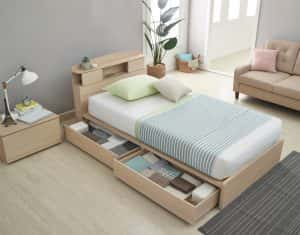
Furniture that allows us to hide things away till they are needed can help keep your home clutter-free and more organised. Some examples could be:
- Ottomans that have hidden storage
- Nested tables that can be separated out when guests arrive
- Beds with drawers below
- A window seat with lift-up hidden storage
- An expandable dining table that can magically unfold to accommodate dinner guests
- A study desk that folds up against the wall when not in use.
Sensory Bliss: The Art of Mindful Textures
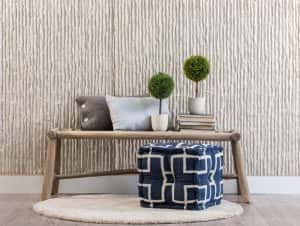
Natural textures have an inherent ability to evoke a sense of comfort and cosiness, instantly creating a welcoming environment.
Sink into the warmth of wool, the gritty roughness of jute, or the plush softness of linen, to enhance the overall ambience of your home. These textures not only add depth and richness to your living space but also engage your sense of touch, fostering a mindful connection to the present moment.
A textured accent wall or even just simple whitewash that has a rough finish adds visual interest and dimension to any room. Experiment with lighting to create dynamic effects on your textured wall, casting intriguing highlights and creating a captivating play of light and shadow.
Experiment with textured wall coverings, like grainy wood plank effects and natural undressed stonework to infuse character into your living spaces. Furniture with distressed wood, lamps in gleaming metal, or drapes in soft and airy fabrics become focal points in your spaces, contributing to a visually dynamic and engaging atmosphere.
The Zen Bedroom Retreat: Designing for Restful Sleep

Zen design philosophy explores the tenets of minimalism, and uses clear lines and straight silhouettes to create simplicity and clarity in living. A Zen bedroom promotes tranquillity, relaxation, and restful sleep. Here’s how you can achieve this lovely design environment in your home!
- Choose soft neutral colours; pastel blues, greens and soft brown are conducive to calmness and serenity.
- Natural materials like wood, bamboo, and stone, when used in the furniture and décor, will help to ground you and connect you to the earth.
- Select bed linens made from natural fabrics like cotton or linen for comfort and breathability. Avoid prints and patterns of any kind.
- Keep your bedroom clutter-free with a minimalist approach to the decor. A simple and uncluttered space can help create a sense of calm.
- A low bed that is just off the ground, with a comfortable yet firm mattress, will help you get a restful sleep.
- Remove electronic devices from the bedroom to reduce distractions and screen time before bedtime. Never watch TV or read in bed.
- Usher in some elements of nature by adding indoor plants, biophilic artwork, or natural textures.
Spaces for Reflection: Mindful Home Offices and Meditation Corners
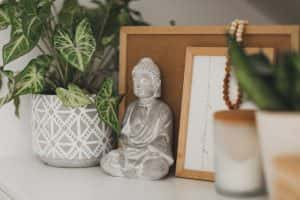 More than ever before, it’s very important to carve out a quiet corner in your home where you can focus on your inner self and find peace. Set up a meditation corner in your bedroom, your balcony, wherever you can get away from the busyness of your daily life! Here are some tips to help put it together:
More than ever before, it’s very important to carve out a quiet corner in your home where you can focus on your inner self and find peace. Set up a meditation corner in your bedroom, your balcony, wherever you can get away from the busyness of your daily life! Here are some tips to help put it together:
- Your meditation corner should be clean and clutter-free.
- Use soothing colours like off-white, cream or soft grey; and avoid distracting prints and patterns.
- You can sit cross-legged on the floor using a soft mat, or use a straight-backed chair that is not too comfortable. You don’t want to fall asleep while you are meditating!
- A Himalayan salt lamp, scented candles, a small statue of Buddha and crystals can help evoke a meditative atmosphere.
- A small water body with recirculating water creates a soothing background soundtrack that calms and relaxes. Nature sounds through a speaker will also help to foster calmness.
- Indoor plants refresh the air and help to connect you with nature.
- Include a small bookshelf with books on mindfulness, meditation and spiritual growth. These books can inspire and encourage your mindful practices.
- Burning essential oils in a diffuser will dispel any negative energy and restore the balance of the air in the room. Use natural scents like lavender, jasmine or mogra for a prayerful ambience.
Budget-Friendly Mindfulness: Tips for Every Home
 Incorporating mindfulness into your home doesn’t have to break the bank! Here are a few budget-friendly tips to create a serene and mindful living space:
Incorporating mindfulness into your home doesn’t have to break the bank! Here are a few budget-friendly tips to create a serene and mindful living space:
- Start by decluttering your home; it doesn’t cost a thing and it can work wonders for your mental health!
- Natural elements like houseplants, stones, or seashells are inexpensive additions that bring a touch of nature indoors, promoting a sense of tranquillity.
- Organic furniture in rattan and wicker is not only a lot cheaper but also fosters that all-important connect with nature.
- DIY art and craft can add your own personal touch, while showing off your skills to the world.
- Vintage furniture has many stored memories from the past that will infuse character and evoke a sense of nostalgia.
- Fairy lights, candles, and soft lamps do not cost the earth but can significantly impact the ambience of your spaces.
- Aromatherapy is a budget-friendly way to evoke a meditative ambience. Burn incense or essential oils in a diffuser, or light up some pretty scented candles to add a delightful fragrance.
- Background music that is soft and has the right frequency can elevate the vibrations in your home. The sound of hang drums, tinkling bells, prayerful chants, or falling rain, if played on a loop, can align with your mindfulness goals.
Showcasing Mindful Home Transformations
Transforming your home into a mindful haven involves thoughtful choices and intentional design. When your home nurtures well-being, it can have a ripple effect that trickles down to every aspect of your life, inspiring productivity, physical health and emotional balance.
Here are some examples of mindful home transformations that you can derive inspiration from!
Biophilic Balcony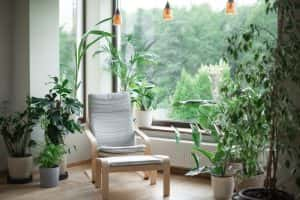 A profusion of greenery, fresh air and abundant light make this balcony a nature-lover’s personal retreat!
A profusion of greenery, fresh air and abundant light make this balcony a nature-lover’s personal retreat!
Nature-inspired Living Room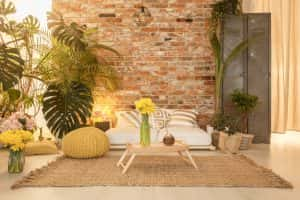 Floor-seating, a reclaimed exposed brick wall, and organic furnishings come together to create a mindful interior that’s as close to nature as it gets!
Floor-seating, a reclaimed exposed brick wall, and organic furnishings come together to create a mindful interior that’s as close to nature as it gets!
Japandi Home
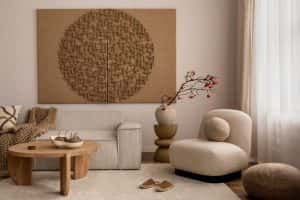
The Japandi style of home décor blends Japanese and Scandinavian influences into a design ethos that is as lovely as it is balanced, promoting a feel-good ambience that is easy to achieve.
Focus on Mindfulness, and Transform Your Life!
As Eckhart Tolle, celebrated proponent of mindful living, suggests, “The present moment is the most precious thing there is.” Most of us, however, completely miss the ‘Now’ as we are so focused on the Future and the Past!
Read our blog for more mindfulness tips. Learn to live in the moment, and use mindful décor ideas to create an oasis of peace, right in your home.
If you’d like some help from the design gurus at HomeLane, do give us a call. Let’s catch up over a cup of coffee—or herbal tea, if you’re in the mood to detox and get mindful!

